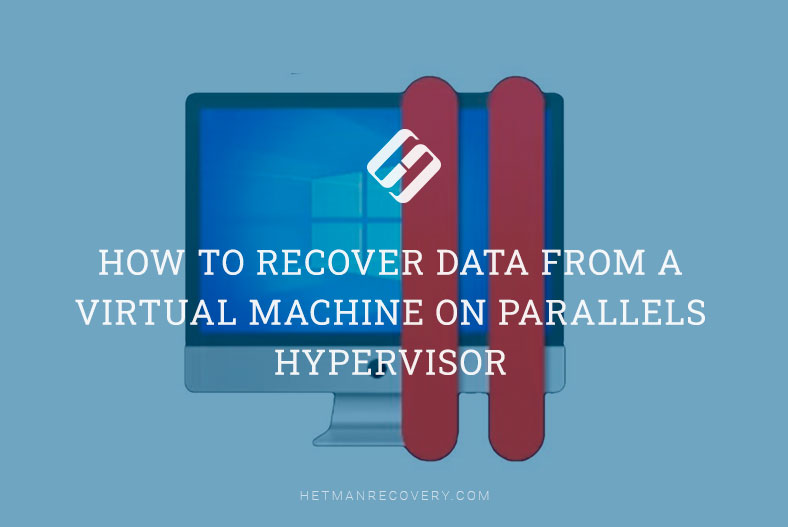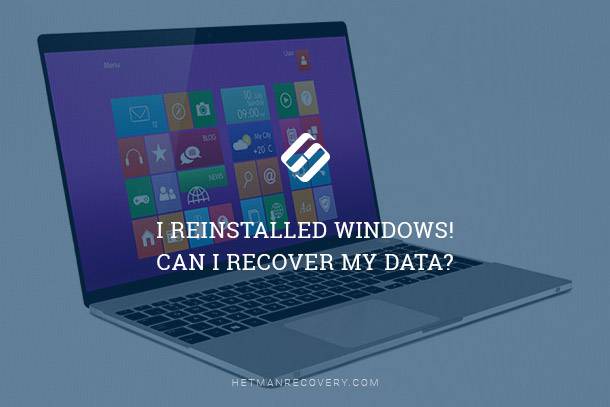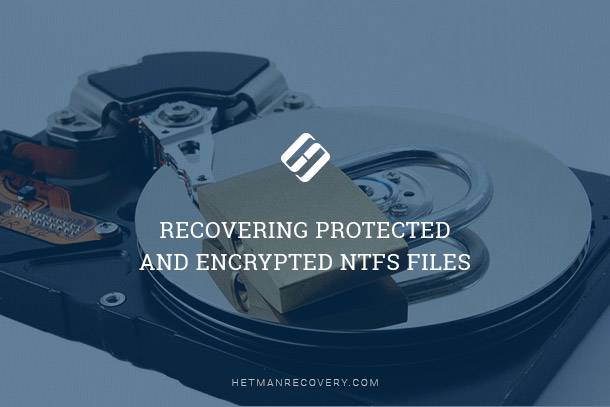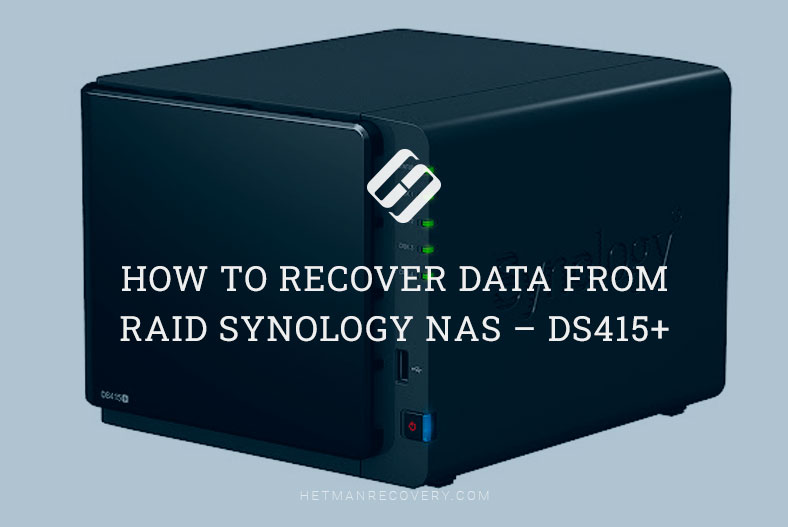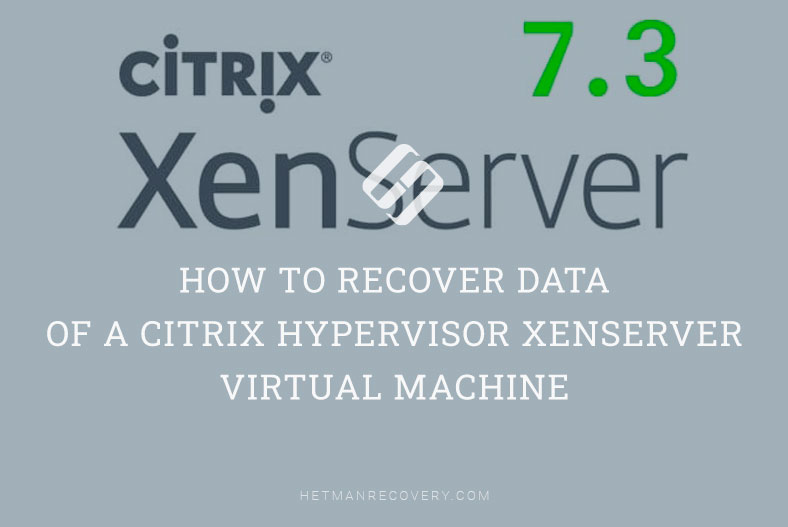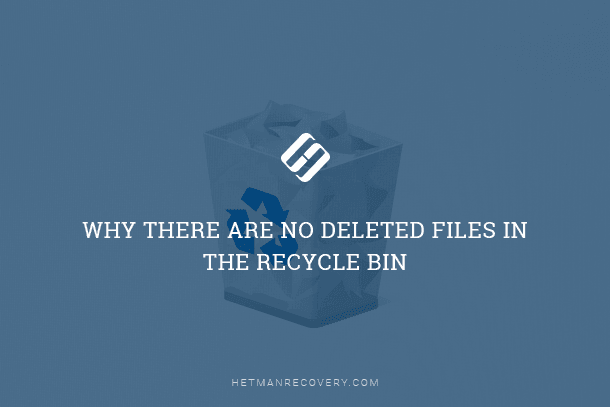How to Read a Windows or MacOS Disk in Linux
Read this article to find out how to get access to disks which were previously used in Windows or MacOS, while you’re using Linux. Specifically, you’ll learn what to do if you need to access the data on a hard disk or USB stick formatted in a file system which is not supported by your version of Linux.
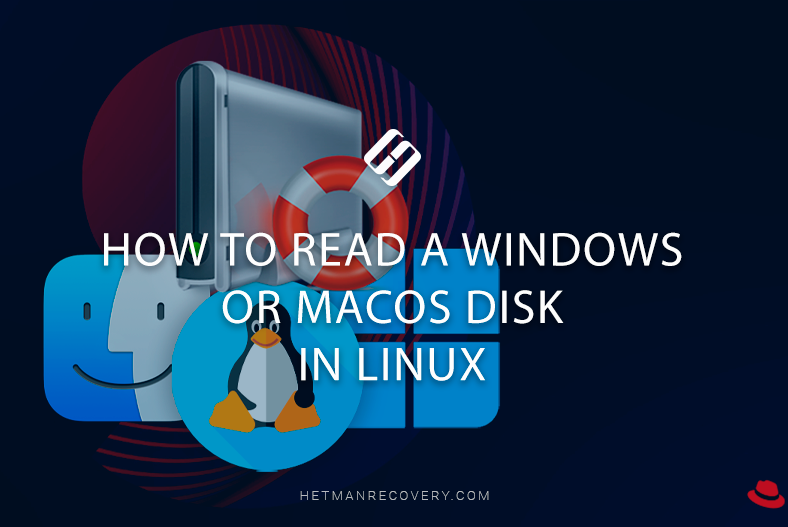
- Linux file systems
- How to read a Windows disk in Linux?
- How to read a MacOS disk in Linux?
- What shall we do with Btrfs or ZFS?
- Conclusions
- Questions and answers
- Comments

WARNING! How to Recover Data from an External Hard Disk on Mac the Right Way
Linux file systems
Linux uses several standard file systems depending on the specific distribution, device type, or the purpose of your application:
- The most widespread file system is ext4;
- Btrfs is a file system supporting snapshots, RAID systems and file compression. This is the default choice for SUSE and Fedora.
- XFS is a high-performance file system for large volumes of data. It is actively used in Red Hat and CentOS.
- ReiserFS – this file system used to be popular due to it efficient work with small files, but it is rarely chosen nowadays.
- ZFS – It’s a powerful file system with integrated RAID and integrity check features which supports large volumes of data. However, it requires a separate installation process.
- exFAT/FAT32 is used to ensure compatibility with Windows and removable drives.
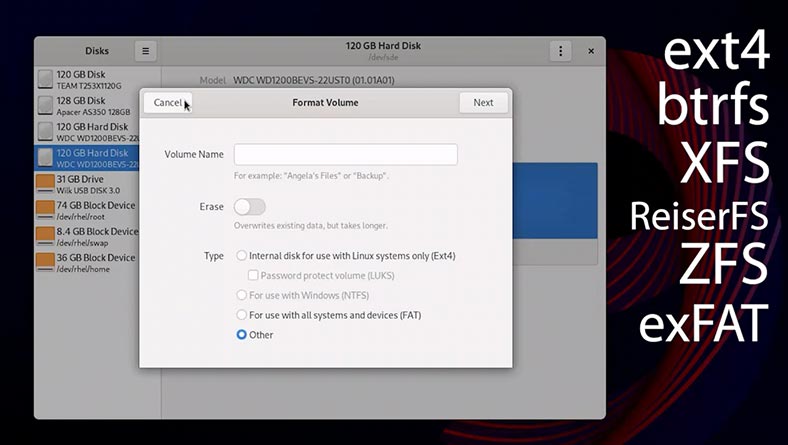
| File system | Description | Typical usage |
|---|---|---|
| ext4 | The most widespread journaling file system with good productivity and reliability. | The main file system for most Linux distributions. |
| ext3 | An older version of ext4 with the journaling feature, but less effective. | Older systems or backwards compatibility. |
| ext2 | No journaling, fast but less reliable in case of failure. | Removable drives, USB sticks. |
| XFS | A scalable high-performance file system for large volumes of data. | Servers, systems handling large files. |
| Btrfs | A modern file system supporting snapshots, RAID, and self-healing. | Advanced users, server systems. |
| F2FS | Optimized for flash drives. | Smartphones, SSDs, USB sticks. |
| ReiserFS | A less popular file system known for efficient management of small files. | Old systems or specialized solutions. |
Yet it should be noted that only some versions of Linux can support each of the file systems I have mentioned.
For example, RedHat and CentOS can’t read ntfs and btrfs disks out of the box, unlike Ubuntu or Mint, Fedora and Debian.
With MacOS file systems, no Linux distribution can really work properly. Some distributions (such as Debian, Mint or Ubuntu) can only read HFS+, while most Linux versions can’t read APFS at all.
So how can we get access to files stored on a hard disk or removable drive formatted in a file system which is not supported by your Linux distribution?
How to read a Windows disk in Linux?
I’ve got an NTFS disk containing some documents. It was used in Windows before, and now I need to access some files on this disk.
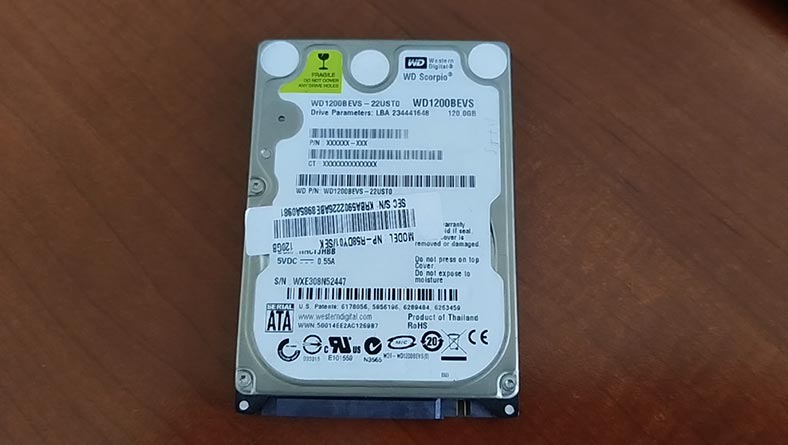
At the moment, my computer is running RedHat. However, the methods to access disks with file systems unsupported by Linux which are described in this article are also relevant for other Linux distributions, such as Ubuntu, Mint, CentOS, Fedora, Debian, and others.
Let’s use any available method to connect this Windows disk with the documents to a Linux PC.
Open the Disks tool to see the NTFS disk in question.
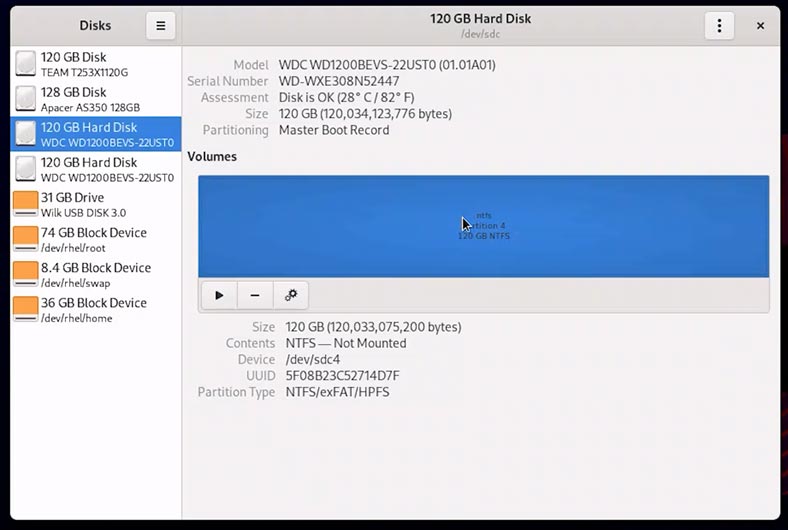
As we try to mount it, an error appears.
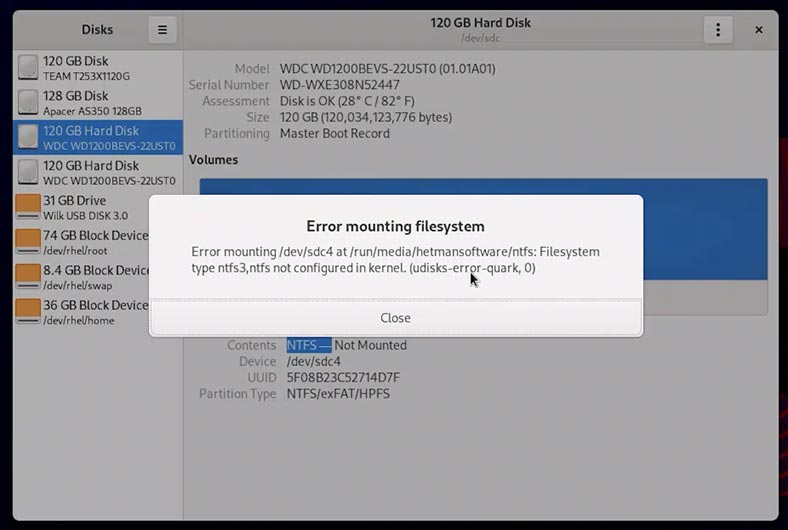
When we move to Files, we can see the disk is not showing up, either.
To access some important documents on the disk, let’s use a data recovery tool – Hetman Partition Recovery.
-
Download and install the tool.
There is a special video about it on our channel. We recommend watching it, if you need to know more about installation.
Go to view
How to install a data recovery tool on Linux with a terminal or a file manager
-
Run the app and enter the ROOT password.
-
Here’s our disk.

-
Double-click on it and choose Fast scan.
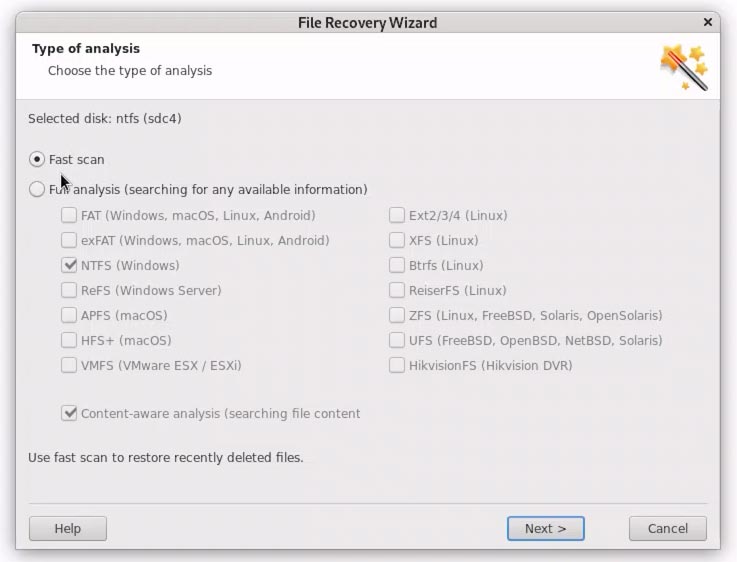
-
The scan is complete. The app is showing all the documents stored on this disk. Their contents can be seen in the Preview window.
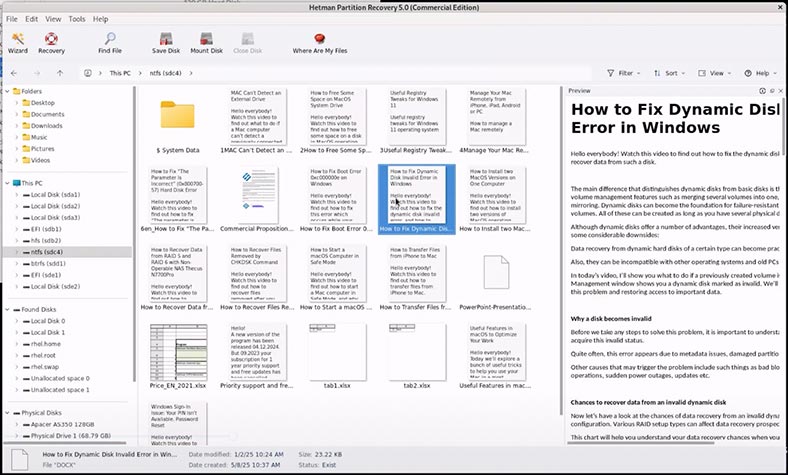
-
To restore the files, select the needed items and click Recovery.
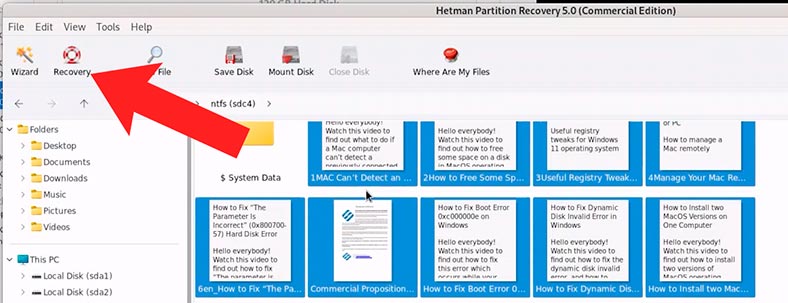
-
Choose a folder to save the selected files and confirm your decision.
-
Here are my documents – and now they are ready for work.
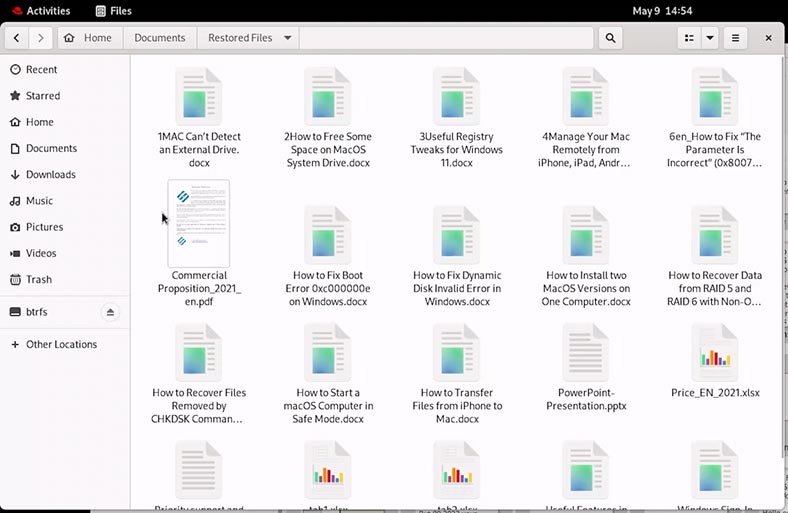
How to read a MacOS disk in Linux?
And what shall we do with MacOS disks?
Suppose that you got your hands on some disks previously used in MacOS. There are files you need to get access to.
Let’s use any available method to connect these MacOS disks to a Linux PC.
Open the Disks tool to see the MacOS disks in question. One of them is formatted in APFS, and the other – in HFS+.
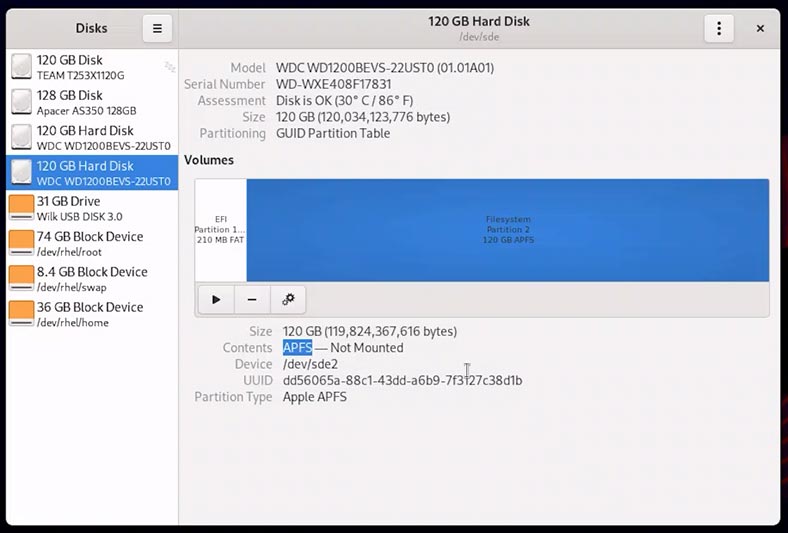
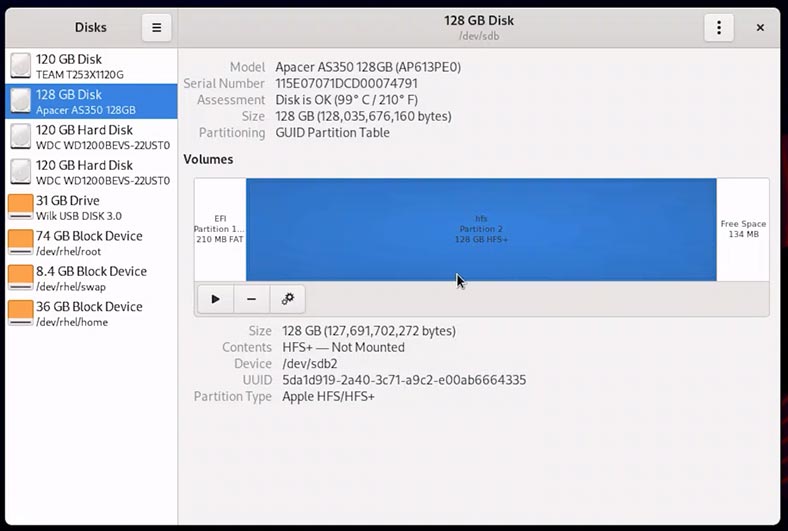
As we try to mount them, an error appears.
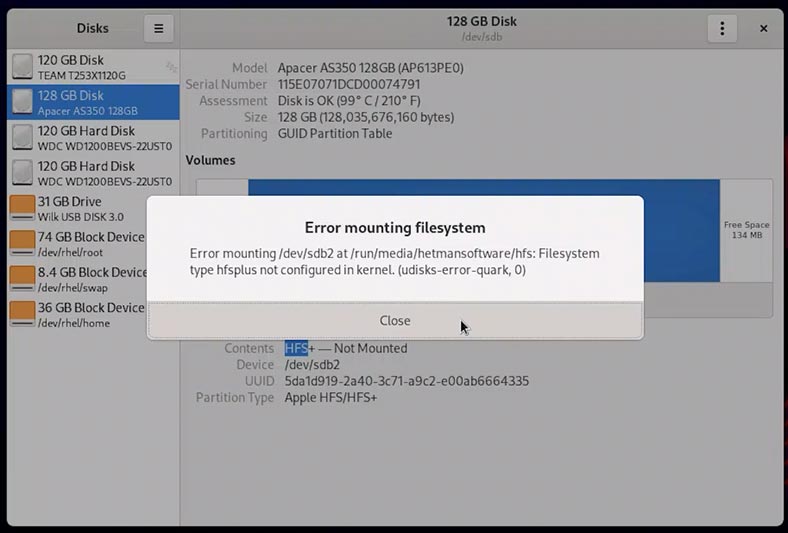
When we move to Files, we can see the disks are not showing up, either.
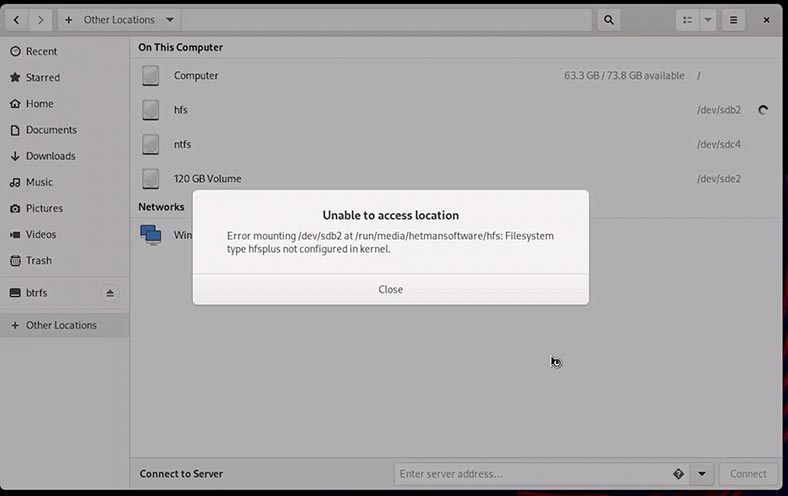
To access some important documents on the disks, let’s use the data recovery tool – Hetman Partition Recovery.
-
Download and install the tool.
There is a special video about it on our channel.
Go to view
How to install a data recovery tool on Linux with a terminal or a file manager
-
Run the app and enter the ROOT password.
-
Here’s our APFS disk.

-
And the disk with HFS+ file system.

-
Double-click on the necessary disk and choose Fast scan.
-
The scan is complete.
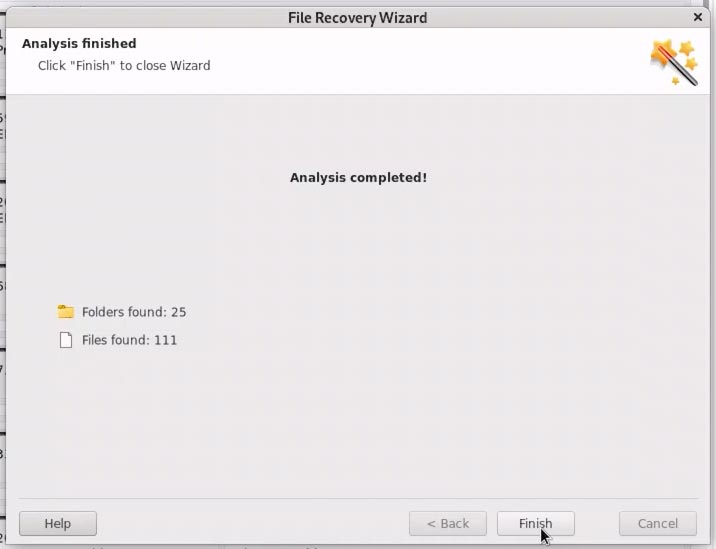
-
The app is showing all the documents stored on this disk.
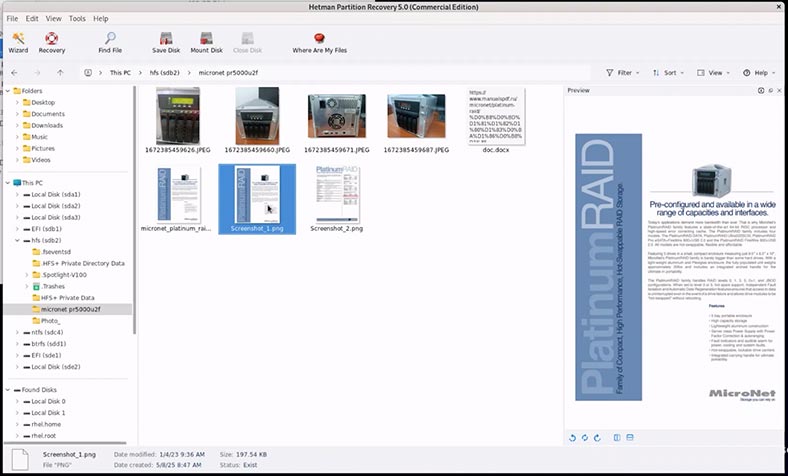
-
Let’s move on to another disk.
-
Double-click on it and choose Fast scan.
-
The APFS disk take a bit longer to scan.
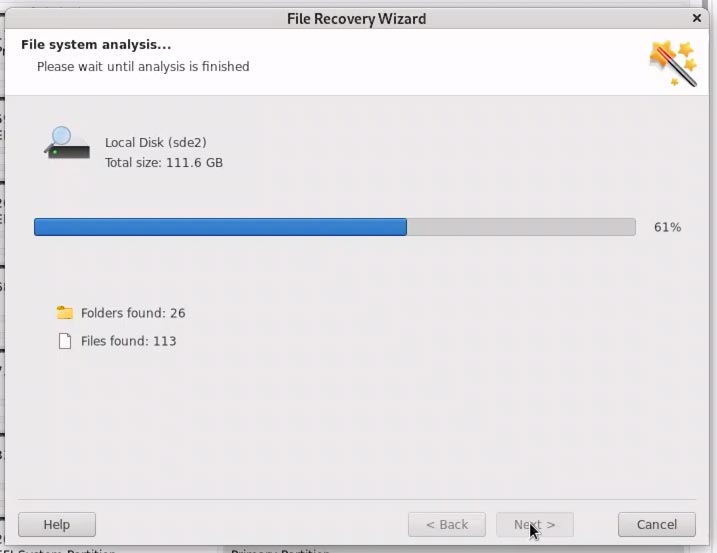
-
The scan is complete. The access to files is granted. The app is now showing all the files and folders stored on this disk. Their contents can be seen in the Preview window.
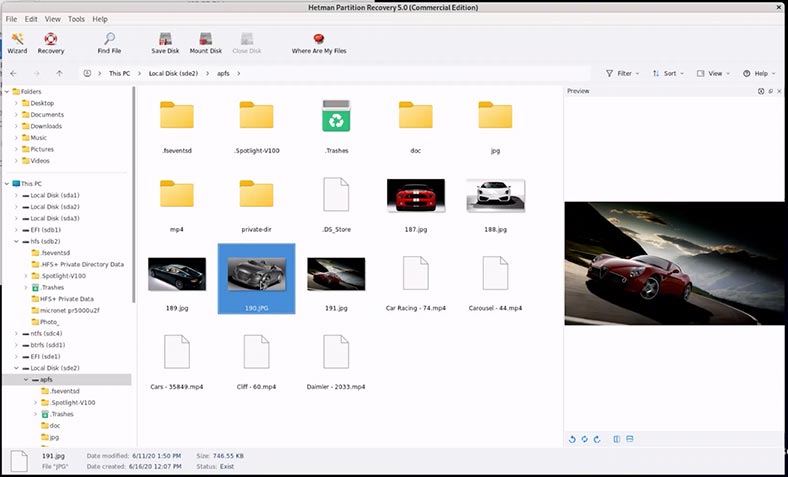
Mind it, that video files are not displayed in the preview window. Once again, we choose to restore them to make sure that the recovery tool handles them properly.
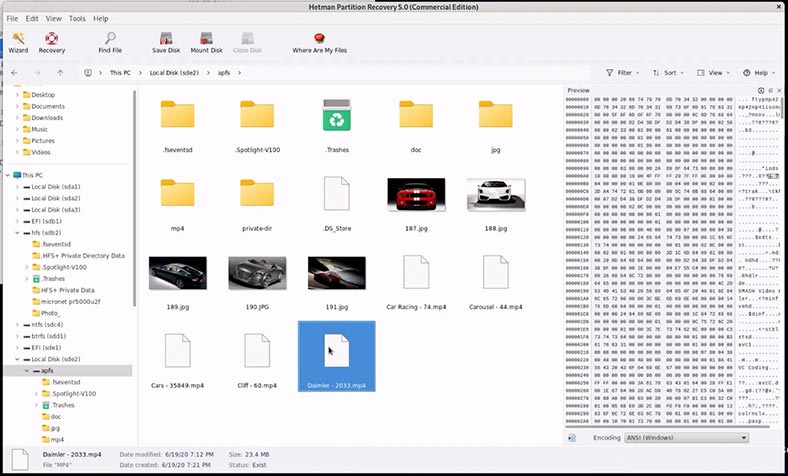
-
To restore the files, select the needed items and click Recovery.
-
Choose a folder to save the selected files and confirm your decision.
-
As you can see, my video files have been recovered. They are not damaged and can be played without any trouble.

What shall we do with Btrfs or ZFS?
Talking of Btrfs and ZFS, although these file systems are considered a typical choice for Linux, they aren’t officially supported in productive Linux environments. For example, it applies to Red Hat.
-
Btrfs is not guaranteed stable support in Red Hat Enterprise Linux, but it’s available in some builds, or through CentOS Stream.
-
ZFS isn’t supported officially, but it can be supported through third tools (for example, ZFS on Linux).
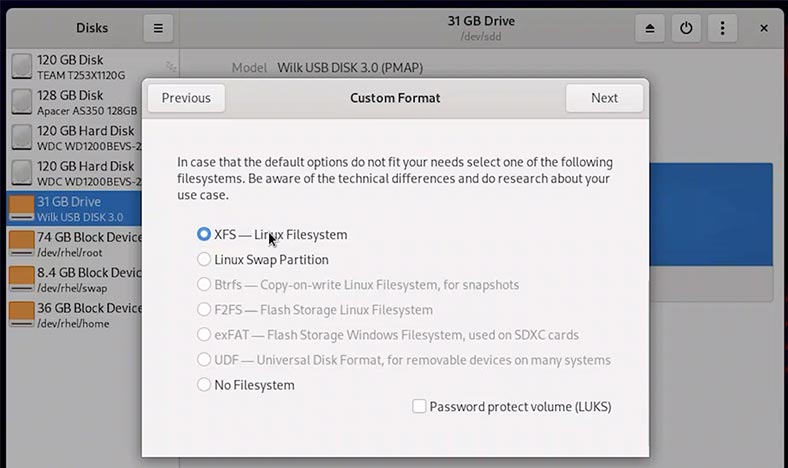
One more way to read a Btrfs or ZFS disk in a specific distribution (like RedHat) is a professional data recovery tool, Hetman RAID Recovery.
I’ve got a removable disk with Btrfs file system, and now I need to access some files on this disk. Let’s use any available method to connect this disk with the files to a Linux PC.
Open the Disks tool to see the Btrfs disks in question.
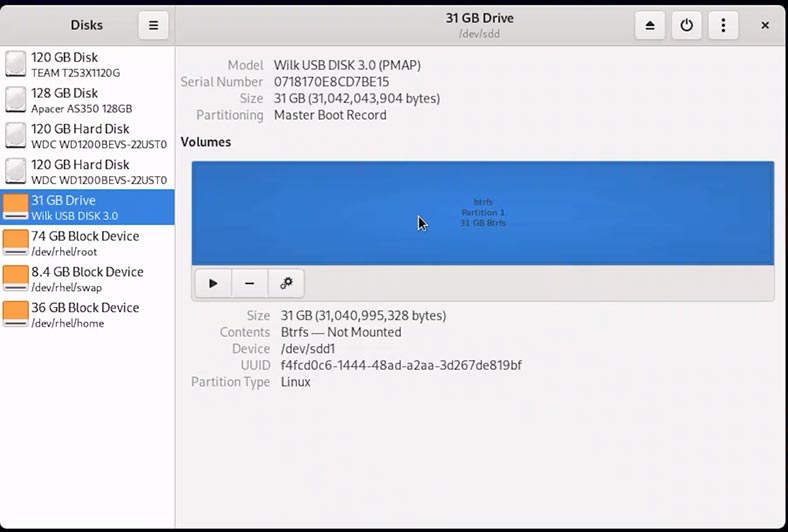
As we try to mount it, an error appears.
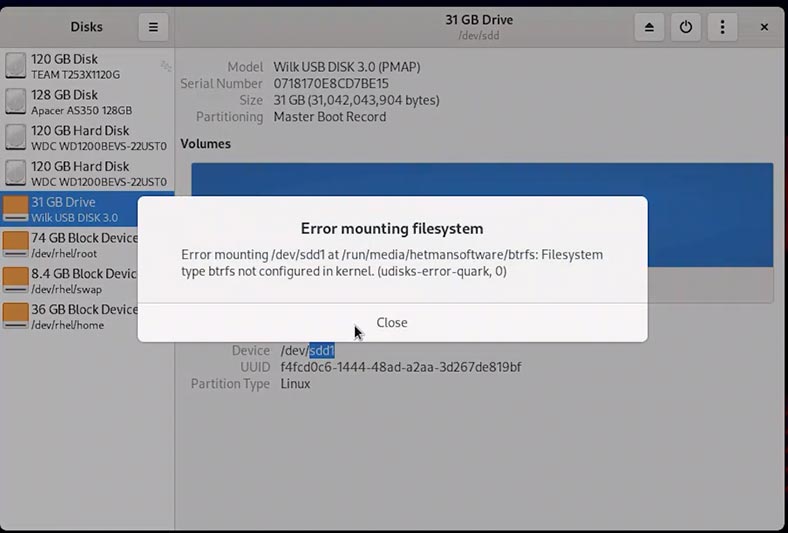
When we move to Files, we can see the disk is not showing up, either.
To access some important documents on the disk, let’s use a data recovery tool – Hetman RAID Recovery.
-
Download and install the tool.
There is a special video about it on our channel.
Go to view
How to install a data recovery tool on Linux with a terminal or a file manager
-
Run the app and enter the ROOT password.
-
Here’s our disk.

-
Double-click on it and choose Fast scan.
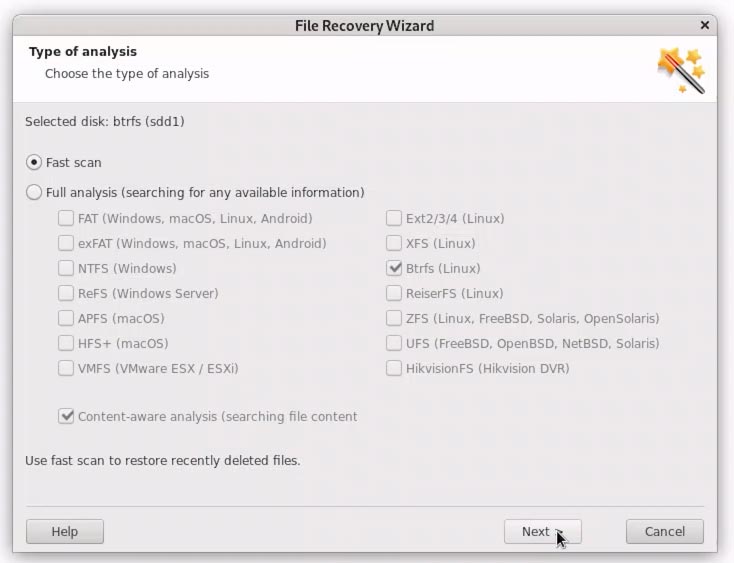
-
The scan is complete. The app is showing all the files and folders stored on this disk. Their contents can be seen in the Preview window.
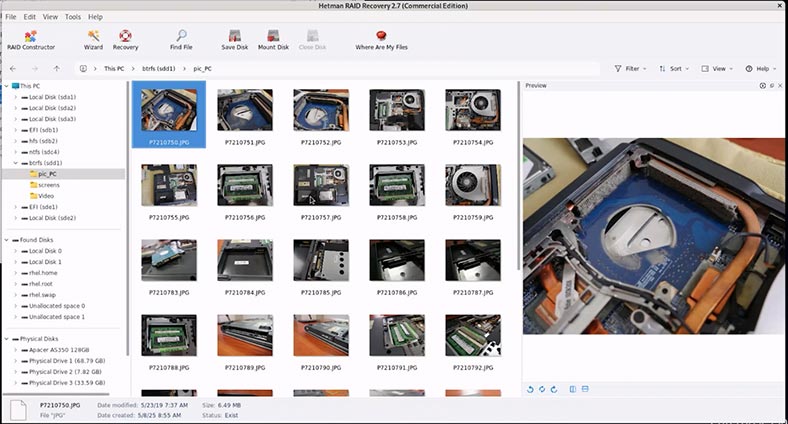
-
As you can see, video files are not displayed in the preview window. Once again, I choose to restore them to make sure that the recovery tool handles them properly.
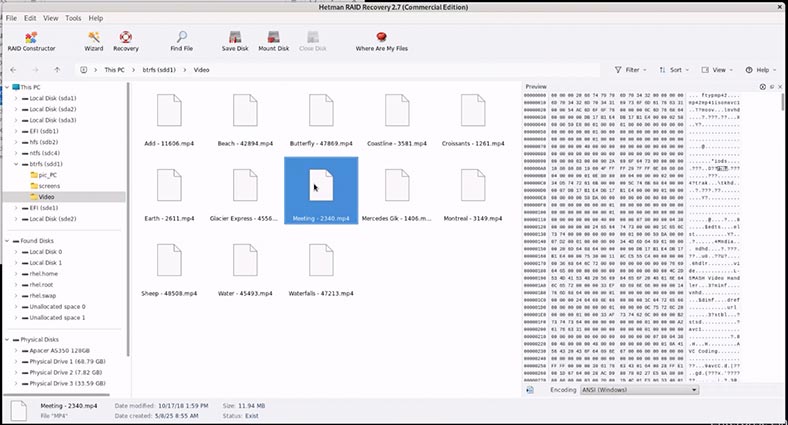
-
To restore the files, select the needed items and click Recovery.
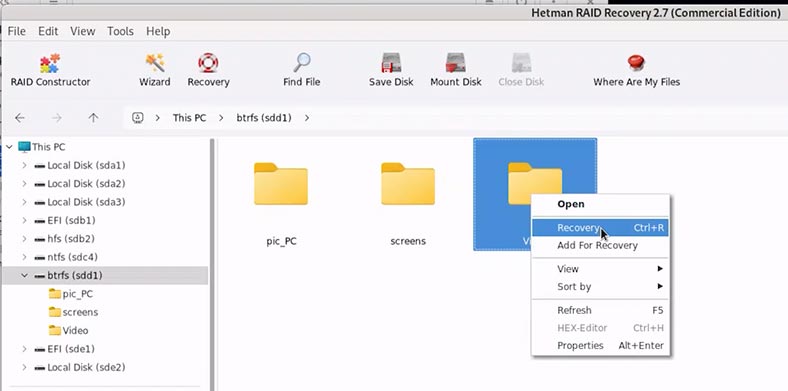
-
Choose a folder to save the selected files and confirm your decision.
-
Here’s my folder. As you can see, my video files have been recovered. They are not damaged and can be played without any trouble.
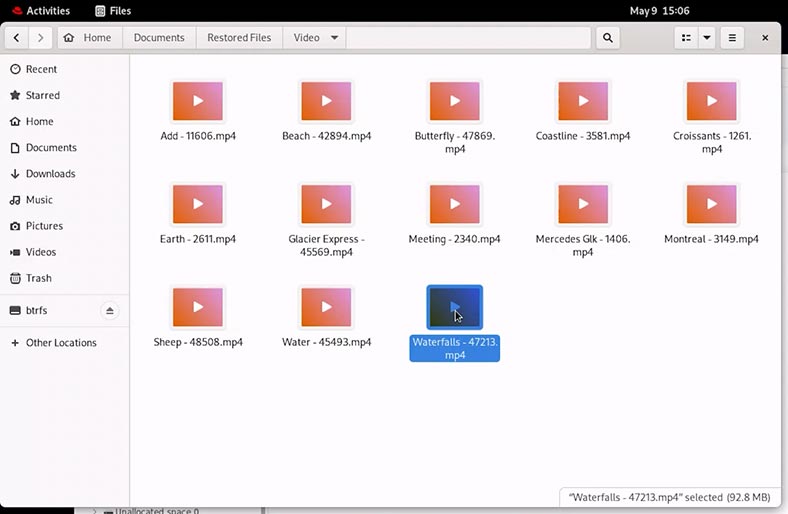
Conclusions
As you could see, getting access to data on disks formatted into a file system that Linux cannot support is pretty quick and easy as long as you use Hetman Software products.
In today’s video, we have briefly covered only a few file systems used in Windows, MacOS and Linux. However, it’s evident that our products support a wide range of other file systems as well as RAID arrays.



